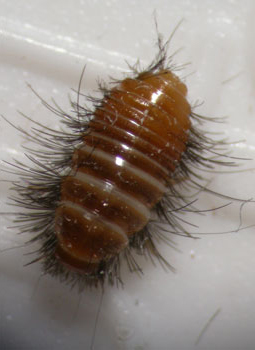PREVENTIVE CONSERVATION
pre·ven·tive /pri'ventiv/
Adjective: Designed to keep something undesirable such as illness, harm, or accidents from occurring.
Preventive conservation, as the name suggests, aims to prevent potential risks to cultural materials. Types of potential risk include:
- extreme environmental conditions, like high temperature or relative humidity
- damage caused by moving objects, like accidentally dropping an object
- damage caused by handling objects, including leaving sweat, oils, and dirt from your hands on the surface of an object
- damage caused by insects and other pests, like mice or carpet beetles
- damage caused by natural disasters like hurricanes and earthquakes, and other emergencies like fire and floods
Conservators employ a variety of strategies to deal with these risks. Temperature and humidity can be monitored and controlled, for example, just like you control heating and cooling in your home. Light levels can also be monitored and adjusted. Conservators assist in creating safe environments for display and storage — like supports and padding for fragile objects. Conservators and other museum professionals also wear gloves when handling artifacts. Insects are usually managed and controlled through a comprehensive plan. The Kelsey’s Integrated Pest Management Plan, for example, prohibits food in the galleries and collection storage areas. Natural disasters are harder to plan for and cope with, but museums and other collecting institutions prepare as best they can with emergency-response and collections-salvage plans.
Click here to see how the Kelsey Museum protects the Maria Barosso watercolors from light damage.

Carpet beetle.

This scanning electron microscope image documents the corrosion caused by a fingerprint left on a metal object just six months before.
Shades partway down on the first floor of the Kelsey Museum’s Upjohn Exhibit Wing.
Glass artifacts stored in padded drawers in the Kelsey Museum.
Collections managers carefully moving objects.
